
Siraj-ud-Daulah was the last independent Nawab of Bengal, reigning from 1756 to 1757. The end of his reign marked the beginning of the rule of the East India Company over Bengal and later almost all of the Indian subcontinent.

The Nawab of Bengal was the hereditary ruler of Bengal Subah in Mughal India. In the early 18th-century, the Nawab of Bengal was the de facto independent ruler of the three regions of Bengal, Bihar and Orissa which constitute the modern-day sovereign country of Bangladesh and the Indian states of West Bengal, Bihar and Odisha. They are often referred to as the Nawab of Bengal, Bihar and Orissa. The Nawabs were based in Murshidabad which was centrally located within Bengal, Bihar, and Odisha. Their chief, a former prime minister, became the first Nawab. The Nawabs continued to issue coins in the name of the Mughal Emperor, but for all practical purposes, the Nawabs governed as independent monarchs. Bengal continued to contribute the largest share of funds to the imperial treasury in Delhi. The Nawabs, backed by bankers such as the Jagat Seth, became the financial backbone of the Mughal court. During the 18th century, the Nawabs of Bengal were among the wealthiest rulers in the world.

Mir Syed Jafar Ali Khan Bahadur was a commander-in-chief or military general who reigned as the first dependent Nawab of Bengal of the British East India Company. His reign has been considered by many historians as the start of the expansion of British control of the Indian subcontinent in Indian history and a key step in the eventual British domination of vast areas of pre-partition India.
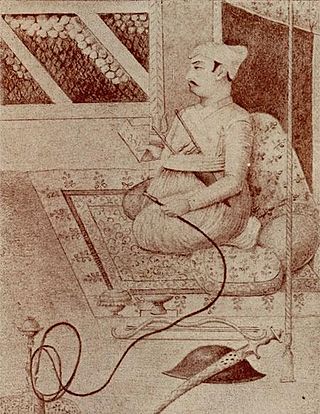
Mir Qasim was the Nawab of Bengal from 1760 to 1763. He was installed as Nawab with the support of the British East India Company, replacing Mir Jafar, his father-in-law, who had himself been supported earlier by the East India Company after his role in winning the Battle of Plassey for the British. However, Mir Jafar eventually ran into disputes with the East India Company and attempted to form an alliance with the Dutch East India Company instead. The British eventually defeated the Dutch at Chinsura and overthrew Mir Jafar, replacing him with Mir Qasim. Qasim later fell out with the British and fought against them at Buxar. His defeat has been suggested as a key reason in the British becoming the dominant power in large parts of North and East India.
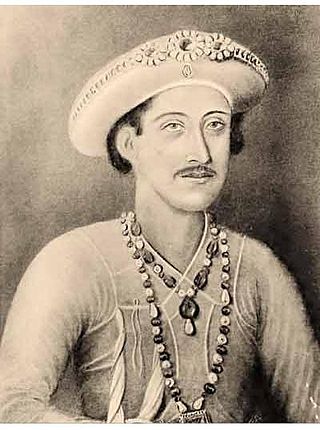
Najmuddin Ali Khan or Najm ud-din Ali Khan, better known as Najm-ud-Daulah, was the Nawab of Bengal and Bihar from 1765 to 1766. He was the second son of Mir Jafar.

Sayyid Najabat Ali Khan Bahadur, born Mir Phulwari, better known as Saif ud-Daulah succeeded his younger brother Nawab Nazim Najimuddin Ali Khan, after his death in 1766, as the Nawab Nazim of Bengal and Bihar.
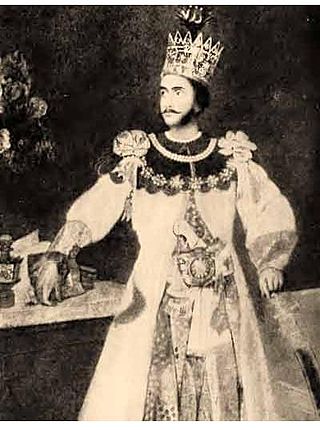
Sayyid Mubarak Ali Khan II, popularly known as Humayun Jah, was born on 29 September 1810 to Ahmad Ali Khan and Nazib un-Nisa Begum. He was the Nawab of Bengal from 1824 to 1838. He was succeeded by Mansur Ali Khan. He built the famous and renowned Hazarduari Palace and Mubarak Manzil in Murshidabad, India. Nawab Nazim Humayun Jah died on 3 October 1838.

Nawab Sir Sayyid Hassan Ali Mirza Khan Bahadur was the eldest son of Mansur Ali Khan, the last Nawab of Bengal. He succeeded his father, Mansur Ali Khan, as the first Nawab Bahadur of Murshidabad as the title of Nawab Nazim of Bengal was abolished in 1880. His installation ceremony was performed in the Throne Room of Hazarduari Palace on 27 March 1883 by Sir Rivers Thompson, the Lieutenant-Governor of Bengal. The sanad conferring the hereditary title of Nawab Bahadur of Murshidabad was however dated 17 February 1882. At his death in 1906, he was succeeded by his son, Wasif Ali Mirza.
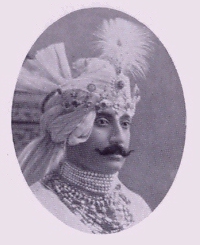
Sir Sayyid Wasif Ali Mirza Khan Bahadur was the Nawab of Murshidabad during 1906–1959. Sir Wasif Ali Mirza was educated at Sherborne School, Rugby School and later at Trinity College. He succeeded his father Hassan Ali Mirza Khan Bahadur at his death on 25 December 1906. On 11 December 1931, Wasif Ali was forced to surrender the administration of his estates to the Government of India after incurring a debt of ₹19 lakhs. On 15 August 1947, the Radcliffe Award allotted the district of Murshidabad to Pakistan and the flag of Pakistan was hoisted at the Hazarduari Palace but within two days the two dominions exchanged Khulna, which is now in Bangladesh, and then the flag of India was hoisted at the grand palace on 17 August 1947. The Government of India also resumed him all his estates in 1953. Wasif Ali was also the founder and president of the Hindu–Muslim Unity Association in the year 1937, named Anjuman-e-Musalman-e-Bangla, which promoted Hindu–Muslim unity. The Nawab also built the Wasif Manzil.

Sayyid Ashraf 'Ali Khan Bahadur, was Nawab Nazim of Bengal and Bihar. He was the fourth son of Mir Jafar.
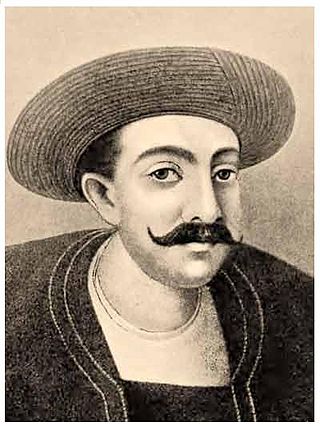
Sayyid Babar Ali Khan Bahadur was the Nawab of Bengal and Bihar. He succeeded to the Nawab's Masnad (throne) after his father, Mubarak Ali Khan died on 6 September 1793. He reigned from 1793 until 1810, when he died on 28 April 1810.
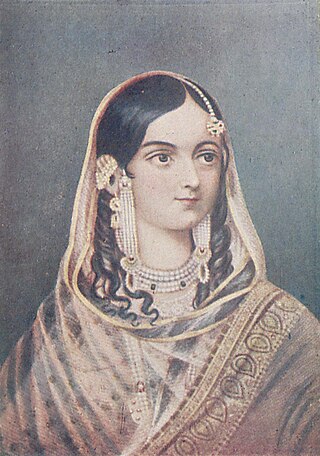
Mehar un-Nisa Begum, better known as Ghaseti Begum, was the eldest daughter of Alivardi Khan, Nawab of Bengal, Bihar and Orissa during 1740–1756.
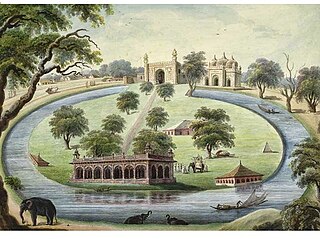
Motijhil, also known as Company's Lake due to its association with the East India Company, is a horse-shoe shaped lake in Murshidabad, West Bengal, India. It was created by Nawazish Muhammad Khan, the son-in-law of Nawab Alivardi Khan. He also constructed a precious palatial palace beside this lake which is called the Sang-i-Dalan which is also known as the Motijhil Palace. It is located at the bend of this lake. It was used as the residence of Nawazish and Ghaseti Begum, Nawazish's beloved wife. It is said that after Nawazish died, Ghaseti Begum lived here until Nawab Siraj ud-Daulah took over the palace and seized the residents' in 1756 AD. With this money he built a similar lake with a beautiful palace, Hirajheel, on the opposite side of the Hooghly River. The palace has a lofty gateway, a mosque known as the "Shahamat Jang" and the Kala Masjid and some other buildings which were all built by Nawazish. This palace was built in 1740. As far as etymology is concerned, the palace has been named so as it was built using black basalt pillars which were brought from the ruins of Gaur. Thus, it was given the name of Sang-i-Dalan or the Stone Palace. This palace was then decorated with different varieties of flower plants and precious marbles.
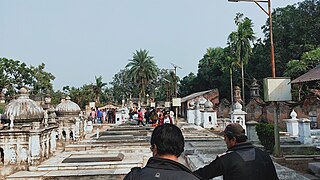
Jafarganj Cemetery is located in Murshidabad, West Bengal, India.

Sayyid Mubarak Ali Khan, better known as Mubarak ud-Daulah, was the Nawab of Bengal and Bihar. He was the son of Mir Jafar and Babbu Begum.

Zain-ud-Din Ali Khan, better known as Ali Jah was the Nawab of Bengal and Bihar. He succeeded his father, Baber Ali Khan after his death on 28 April 1810. He was succeeded by his half-brother, Ahmad Ali Khan, after his death.

Khushbagh is the garden-cemetery of the Nawabs of Bengal, situated on the west bank of the Hooghly river, about a mile from its east bank, in the Murshidabad-Jiaganj CD block in Lalbag subdivision of Murshidabad district, West Bengal, India. Khushbagh hosts the graves of the Nawabs of Bengal of the Afshar dynasty and their family members; while Jafarganj Cemetery hosts the graves of the later Nawabs and their families, starting from Mir Jafar, who belonged to the Najafi dynasty. Khushbagh is the resting place of Nawab Siraj ud-Daulah, his wife Lutf-un-nisa, Nawab Alivardi Khan, and his mother, amongst others.

Zinzira Palace, also spelt Jinjira Palace, is a late 17th century Mughal-era palace in Keraniganj, Bangladesh on the southern banks of the Old Ganges or Buriganga River. It was built by Ibrahim Khan II, Bengal's last subedar before Aurangzeb's grandson Azim-ush-Shan took control of the region, as his recreation resort opposing the Bara Katra in the Chowk Bazar neighborhood of Old Dhaka on the other side of the river. The palace is known for the tragic imprisonment of the female members of the Bengal Nawab family following the Battle of Plassey (1757).

Lutfunnisa Begum was the 3rd wife and primary consort of Siraj ud-Daulah, the last independent Nawab of Bengal.

Amina Begum was a Bengali aristocrat from the Nawab family of Bengal and mother of Siraj ud-Daulah, the last independent Nawab of Bengal.




















